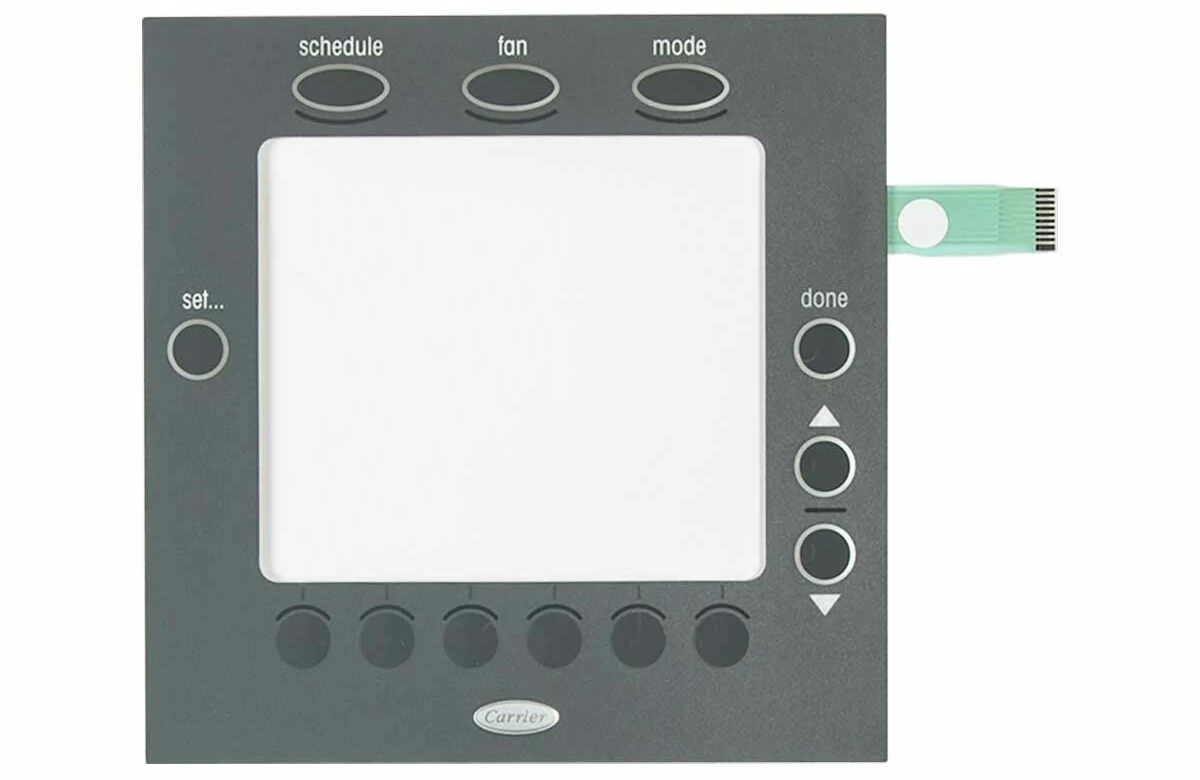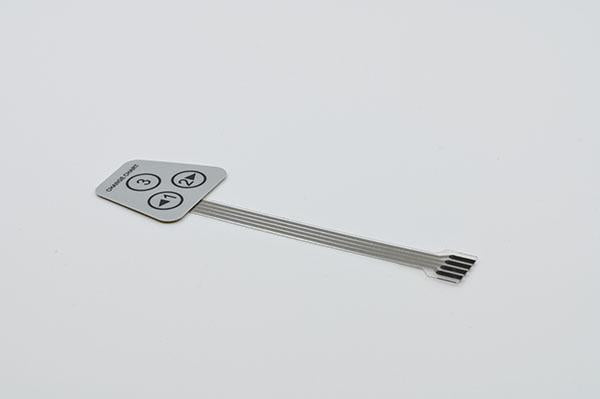How Membrane Switches Are Revolutionizing User Interface Design
How Membrane Switches Are Revolutionizing User Interface Design
Blog Article
Discover How Membrane Switches Feature and Their Duty in Modern Electronic Devices
Membrane Switches represent an innovative assimilation of innovation and design within the world of contemporary electronic devices, working as necessary user interfaces in various devices. Included several layers, these buttons use pressure-sensitive mechanisms to facilitate customer interaction. Their applications extend various sectors, from consumer electronic devices to clinical equipment, highlighting their versatility and importance. Recognizing the details of Membrane switch capability and their broader implications in enhancing customer experience invites more exploration into their layout, benefits, and the innovative advancements forming their future in innovation.
What Are Membrane Switches?

Membrane buttons are differentiated by their resilience and resistance to ecological variables, such as dust, wetness, and extreme temperature levels. They can be tailored with numerous graphics, colors, and responsive comments choices, boosting customer experience while maintaining aesthetic appeal - membrane switches. The unification of published circuits permits for seamless integration into devices, improving total functionality.
The flexibility of Membrane buttons is obvious in their ability to support both complicated and simple control features. They can integrate features such as LED indications and touch-sensitive modern technology, dealing with details user needs. As innovation continues to develop, Membrane Switches stay important for allowing reliable and user-friendly interface, thereby playing a crucial role in the innovation of modern electronic tools.
Elements of Membrane Switches
Membrane switches are composed of a number of essential parts that interact to develop a reputable and functional interface. The primary components include the visuals overlay, adhesive layer, spacer layer, and conductive traces.
The graphic overlay acts as the user interface, typically published on a versatile substrate such as polyester or polycarbonate. This layer not just offers visual appeal however likewise consists of tactile comments, aesthetic hints, and safety attributes. Below the visuals overlay exists the sticky layer, which protects the switch to the tool and guarantees resilience versus environmental stress and anxieties.
The spacer layer is essential for maintaining the needed space in between the graphic overlay and the circuit layer. When pressure is used, this space permits for the activation of the switch. The conductive traces, typically made from silver or carbon, form the electric paths that complete the circuit when the switch is engaged.
Additionally, a backing layer might be included for structural support and insulation. These components work together flawlessly, ensuring that Membrane buttons are both resistant and easy to use, making them essential in different contemporary digital applications.
Exactly How Membrane Switches Work
How do Membrane Switches function efficiently within digital gadgets? Membrane Switches operate on the principles of pressure-sensitive modern technology, using a layered webpage building that consists of visuals overlays, adhesive layers, and conductive components.
The layout of Membrane buttons is critical for their efficient procedure (membrane switches). The layers are diligently crafted to provide responsive feedback, durability, and resistance to ecological aspects such as moisture and dirt. The inclusion of domes-- little, increased locations within the switch-- boosts tactile reaction, providing users with a recognizable click feeling upon activation
Moreover, Membrane buttons can be personalized in regards to size, shape, and graphics, making them suitable for numerous applications. They are frequently utilized in control panels, medical tools, and consumer electronic devices due to their smooth layout and reliability. Overall, the effective performance of Membrane switches is pivotal in improving individual communication and guaranteeing seamless procedure in modern electronic tools.

Applications in Modern Devices
Using their distinct style and performance, Membrane buttons have become important parts in a large range of contemporary electronic gadgets. These flexible interfaces are used in customer electronic devices, commercial equipment, clinical devices, and automobile controls, offering smooth individual interaction.
In customer electronic devices, Membrane buttons are commonly discovered in devices like microwaves, cleaning equipments, and various other household devices, where they enable intuitive control with a sleek profile. Their low-profile layout facilitates combination into compact devices, enhancing visual allure without endangering performance.
In industrial applications, Membrane Switches function as control panels for machinery, supplying sturdiness and resistance to harsh atmospheres. Their ability to withstand dampness and impurities makes them suitable for usage in production and processing industries.
Clinical gadgets additionally profit from Membrane buttons, which are created to be very easy to tidy and maintain, making certain hygiene in medical setups. They are frequently used in analysis equipment, person tracking systems, and portable clinical gadgets, where reliability is my explanation vital.
Benefits of Membrane Buttons
Among the essential advantages of Membrane switches is their flexibility, which permits them to be tailored for a selection of applications across numerous markets. These buttons can be created in various sizes and shapes, suiting special product demands while giving seamless integration into gadgets. Their slim profile allows a smooth and portable style, commonly enhancing the aesthetic allure of digital products.
An additional significant benefit is their sturdiness - membrane switches. Membrane switches are normally immune to dust, wetness, and chemicals, making them excellent for harsh settings. This resilience extends their life expectancy contrasted to standard mechanical switches, minimizing the demand for frequent replacements
Additionally, Membrane Switches deal cost-effectiveness. The production process entails printing innovations that lessen manufacturing prices, particularly for huge runs. This affordability, integrated with reduced upkeep requirements, makes them an eye-catching option for makers.

Final Thought
In verdict, Membrane Switches stand for a substantial innovation in customer interface technology within contemporary electronics. As the demand for instinctive and resilient interfaces continues to expand, the function of Membrane buttons in shaping customer experience will certainly increase.
Membrane Switches stand for a sophisticated integration of technology and layout within the realm of modern electronic devices, serving as crucial user interfaces in various tools.In the realm of modern-day electronics, Membrane my sources Switches offer as important components that assist in user communication with devices. As modern technology continues to progress, Membrane Switches stay important for making it possible for instinctive and efficient user interfaces, therefore playing a pivotal function in the development of modern-day electronic gadgets.
Exactly how do Membrane Switches function successfully within digital devices? On the whole, the efficient performance of Membrane switches is crucial in boosting customer interaction and making sure smooth operation in modern digital tools.
Report this page